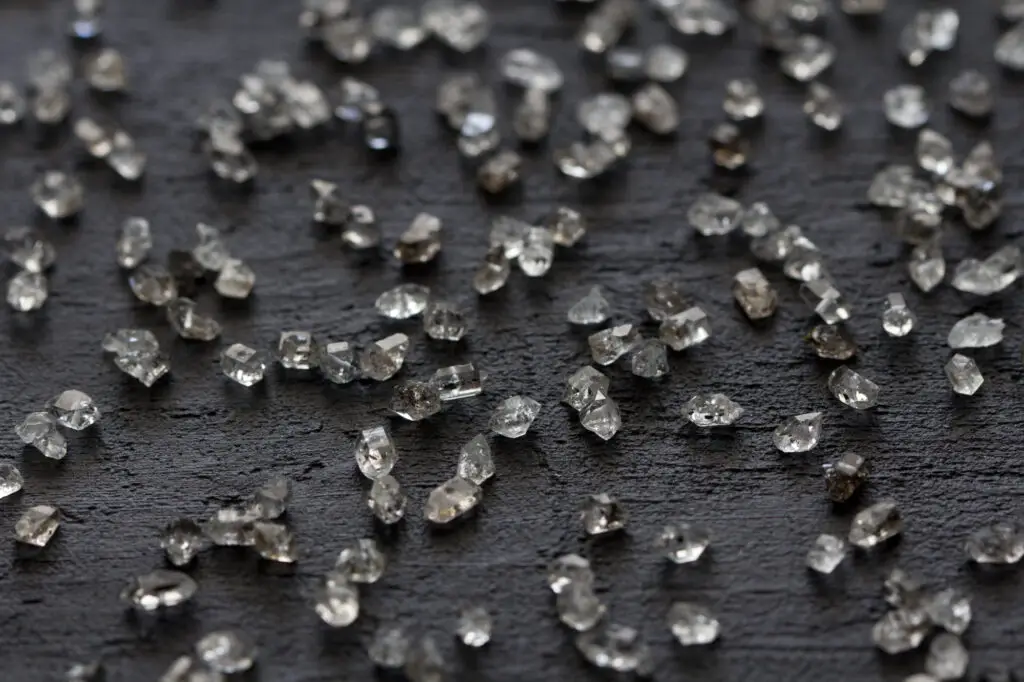Welcome to another fascinating exploration into the hidden wonders of our planet! In today’s post, we’ll delve deep into the enigmatic world of gemstones, specifically focusing on the ever-glamorous diamond.
While popular culture may have led us to believe that diamonds can be found hidden in the depths of mysterious caves, this couldn’t be further from the truth. So, why don’t we find these precious stones nestled within the shadows of cavernous spaces?
Join us as we uncover the geological processes behind diamond formation and debunk the myth of diamonds in caves, taking you on a journey that reaches far below the earth’s surface, where the true story of these dazzling gems unfolds.

What Is A Cave?
A cave is a natural underground space, large enough for people to explore, that moves beyond the earth’s surface. Caves can be found in various forms and are created through a variety of geological processes. Some of the most common types include solution caves, lava caves, and sea caves.
Solution caves, also known as limestone caves, are the most widespread and typically form in regions with soluble rocks such as limestone, dolomite, and gypsum. Water containing dissolved carbon dioxide (carbonic acid) seeps into the ground and dissolves the soluble rock, creating underground passages and chambers over thousands to millions of years.
Lava caves, also known as volcanic caves, form during volcanic eruptions when the outer surface of a lava flow cools and solidifies, while the bubbling lava underneath continues to flow, eventually moving away and leaving behind a hollow tube-like structure.
Sea caves, on the other hand, are formed by the relentless erosive action of waves against coastal cliffs, primarily in areas with softer rocks that are more susceptible to erosion.
Caves often harbor unique ecosystems, with various flora and fauna adapted to the dark, damp, and cool conditions. They also hold great significance in human history, having served as shelters, storage spaces, and canvases for ancient art.
Have Diamonds Ever Been Found In A Cave?
While diamonds are not typically found in caves, there have been instances where diamond-bearing rocks have been discovered within cave systems.
One such example is the Cave of Crystals in Naica, Mexico. This cave, famous for its massive gypsum crystals, was found to contain fluid inclusions with trace amounts of diamonds. However, it is essential to note that these diamonds are not in the form we typically think of when we imagine diamond deposits. Instead, they are tiny microscopic diamonds suspended within the fluid inclusions.
It is crucial to remember that such occurrences are rare and not indicative of the standard geological processes that form diamonds. Diamonds typically form deep within the Earth’s mantle under extreme pressure and temperature conditions, later brought to the surface through volcanic eruptions that create kimberlite and lamproite pipes. These pipes are the primary sources for diamond mining, rather than caves.
What Places Apart From Caves Are Diamonds Found?
Diamonds are primarily found in volcanic structures known as kimberlite and lamproite pipes, which are formed when diamonds and other mantle-derived rocks are brought to the Earth’s surface through volcanic eruptions.
Some diamonds can also be found in alluvial deposits, where they have been transported from their original source by erosion, water currents, and natural weathering processes. Here are some notable examples of diamond-producing locations around the world:
Russia: The Mirny mine in eastern Siberia is one of the largest diamond mines globally and has been a significant source of diamonds since its discovery in the 1950s. The Jubilee and Udachny mines are other notable diamond mines in Russia.
Botswana: The Jwaneng and Orapa mines in Botswana are among the world’s most productive diamond mines, with Botswana being one of the largest diamond producers by volume.
Democratic Republic of Congo: The Mbuji-Mayi region in the Democratic Republic of Congo hosts several diamond mines and is particularly known for its alluvial diamond deposits.
Canada: The Diavik and Ekati mines, located in the Northwest Territories, are significant diamond producers in Canada. The country has become a major player in the diamond industry since the 1990s.
Australia: The Argyle mine in Western Australia, known for its pink diamonds, was one of the world’s largest diamond producers by volume before its closure in 2020. Diamonds found in this mine were predominantly hosted in lamproite pipes rather than kimberlite pipes.
South Africa: South Africa has a rich history of diamond mining, with the Kimberley mine (also known as the Big Hole) being one of the most famous mines. The country also has several other diamond mines, including the Venetia, Finsch, and Cullinan mines.
India: Although not a significant producer in modern times, India was historically one of the earliest sources of diamonds. The Golconda region was particularly famous for its alluvial diamond deposits, with famous diamonds such as the Hope Diamond and the Koh-i-Noor originating from this area.
While diamonds are found in various locations globally, these examples represent some of the most significant and well-known diamond-producing regions.
Sources:
